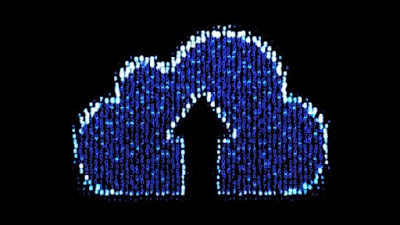Monday, January 29, 2018
How Secure Is Your Data When It's Stored In The Cloud?
As distributed storage turns out to be more typical, information security is an expanding concern. Organizations and schools have been expanding their utilization of administrations like Google Drive for quite a while, and heaps of individual clients likewise store documents on Dropbox, Box, Amazon Drive, Microsoft OneDrive and so forth. They're no uncertainty worried about keeping their data private – and millions more clients may store information on the web on the off chance that they were progressively sure of its security.
Information put away in the cloud is almost dependably put away in an encoded frame that would should be split before an interloper could read the data. In any case, as a researcher of distributed computing and cloud security, I've seen that where the keys to that encryption are held differs among distributed storage administrations. What's more, there are generally straightforward ways clients can help their own information's security past what's incorporated with frameworks they utilize.
Who Holds The Keys?
Business distributed storage frameworks encode every client's information with a particular encryption key. Without it, the documents look like jabber – as opposed to significant information.
In any case, who has the key? It can be put away either by the administration itself, or by singular clients. Most administrations keep the key themselves, giving their frameworks a chance to see and process client information, for example, ordering information for future hunts. These administrations likewise get to the key when a client sign in with a watchword, opening the information so the individual can utilize it. This is considerably more helpful than having clients keep the keys themselves.
In any case, it is additionally less secure: Just like general keys, on the off chance that another person has them, they may be stolen or abused without the information proprietor knowing. Furthermore, a few administrations may have imperfections in their security rehearses that leave clients' information helpless.
Giving Users A chance to keep Control
A couple of less prominent cloud administrations, including Mega and SpiderOak, expect clients to transfer and download records through administration particular customer applications that incorporate encryption capacities. That additional progression gives clients a chance to keep the encryption keys themselves. For that extra security, clients renounce a few capacities, for example, having the capacity to look among their cloud-put away records.
These administrations aren't impeccable – there's as yet a plausibility that their own particular applications may be bargained or hacked, enabling a gatecrasher to peruse your documents either before they're scrambled for transferring or subsequent to being downloaded and decoded. A scrambled cloud specialist organization could even insert works in its particular application that could leave information helpless. Furthermore, obviously, if a client loses the secret word, the information is lost.
One new portable application says it can keep telephone photographs encoded from the minute they're taken, through transmission and capacity in the cloud. Other new administrations may emerge offering comparative security for different sorts of information, however clients should in any case be alert against the potential for data to be captured in the couple of minutes after the photo is taken, before it's scrambled and put away.
Securing Yourself
To boost distributed storage security, it's best to join the highlights of these different methodologies. Before transferring information to the cloud, first scramble it utilizing your own encryption programming. At that point transfer the encoded record to the cloud. To access the record once more, sign in to the administration, download it and unscramble it yourself.
This, obviously, keeps clients from exploiting numerous cloud administrations, as live altering of shared reports and seeking cloud-put away records. Furthermore, the organization giving the cloud administrations could at present adjust the information, by modifying the scrambled document before you download it.
The most ideal approach to secure against that is to utilize validated encryption. This strategy stores an encoded record, as well as extra metadata that gives a client a chance to identify whether the document has been altered since it was made.
Eventually, for individuals who would prefer not to figure out how to program their own particular devices, there are two fundamental decisions: Find a distributed storage benefit with reliable transfer and download programming that is open-source and has been approved by autonomous security specialists. Or on the other hand utilize trusted open-source encryption programming to encode your information before transferring it to the cloud; these are accessible for every working framework and are by and large free or minimal effort.
Subscribe to:
Post Comments (Atom)

No comments:
Post a Comment